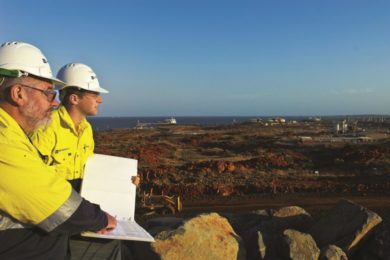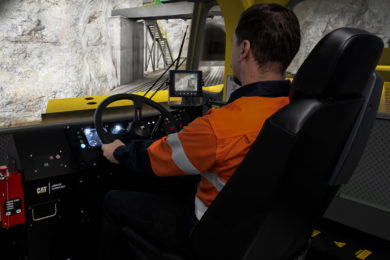The Sandvik team of Udo Fischer and co-workers Torbjörn Hartzell and Jan Åkerman will be inducted in the Underground Development category at the gala dinner in the Brown Palace Hotel, Denver on February 16 (www.im-halloffame.com). They have developed, over the years, more productive rock tools for both percussive drilling and cutting applications.
Fischer was born 1938 in Germany. He moved 1965 to Sweden and started to work in the Sandvik Cemented carbide R&D center in Stockholm. He joined the small Rock Tool group and after a few years he was the leader of that group. The 1960s saw the first generation of rock drilling tools with brazed flat inserts, used in integral tools and cross-bits. The first bits with round buttons, were developed during his first years with Sandvik, where all sharp corners and edges as weak points were eliminated and he took a big part in that development. More wear-resistant cemented carbide grades were possible to use without risk that the decreased toughness resulted in fractured tools. For tools for percussive drilling in hard rock the brazed tools disappeared and the buttons were pressed into holes with very close tolerances, which give very good support for the button. From the users point of view already the first type of button bits was a big improvement as a 76 mm cross bit with four flat inserts were reground 15 to 20 times during its lifetime but a button bit needed only three to five times during comparable time.
By the 1970s demand on the tools was increasing in order to drill deeper, faster and larger holes. The manufacturing methods for cemented carbide were fine-tuned in order to reduce general defect levels and increased yield for Sandvik cemented carbide. Also work to optimise the geometry of buttons and complete tools was carried out. The much better controlled production equipment developed gave new possibilities to further optimise cemented carbide grades for rock drilling tools.
However, by the beginning of the 1980s the obvious limits for conventional cemented carbide in rock drilling tools was reached due to the fact that an increase in wear resistance by using less binder phase or more fine grained tungsten carbide always resulted in an unacceptable loss of toughness for the demanding application. Udo and his co-workers Torbjörn Hartzell (born 1946) and Jan Åkerman (born 1952) tested several new concepts with limited success. However, between 1988 and 1995 their four US patents were approved covering the new Dual Property (DP) cemented carbide which still is the most well-known cemented carbide using macro- gradients. In the DP concept the wear resistance and the toughness can be improved independently of each other in the product. Controlled re-distribution of cobalt binder phase several millimeters inside the buttons gives components which contains three distinct microstructural zones. These gradients, together with their differences in thermal expansion, redistribute the internal stresses. It is for example possible to create a very hard and wear-resistant surface layer which is simultaneously pre-loaded with compressive stresses to prevent the initiation and propagation of cracks. Carbide having such a distribution of properties has high wear resistance at the surface combined with a tough underlying region. The new type of tools often has double life-length compared to conventional tools especially in top hammer and DTH applications.









